Pesto with Sunflower Seeds (No Pine Nuts)
If you’ve ever looked up the price of pine nuts, you know they can make homemade pesto feel like a luxury item. Back in 2014, when I stopped eating dairy and started making my own pesto at home, I quickly realized I needed a more affordable alternative, and that’s when sunflower seed pesto became a staple in my kitchen. Sunflower seeds are not only budget friendly, they also make a great substitute for pine nuts in pesto sauce, and they blend up beautifully with fresh basil and olive oil.
When I ran my meal prep business, I learned quickly how important it was to keep meals affordable without sacrificing flavor. I honestly can’t remember if I ever made this sunflower seed pesto for clients, but I know it would have been a hit, it’s creamy, flavorful, budget friendly, and uses ingredients I typically have on hand, especially when my basil plants are growing out of control in the summer.

If you’re a fan of making your own sauces at home, I’ve also got a few other options you’ll love: try my tahini pesto for a nut free, sesame-based version, roasted red pepper pesto (such a fun twist on the classic), or my arugula cashew pesto, which tastes just like the one from Trader Joe’s but is even fresher when you make it at home.
Ingredients you will need

- Sunflower seeds – I like to use raw sunflower seeds (unsalted) that I toast on the stove to give a deep, nutty flavor. Be sure you are using sunflower seeds that have been removed from the shell.
- Basil – There really is no substitute for fresh basil. Be sure to pick the basil leaves off the thick stems and measure them by loosely packing them in a cup.
- Baby spinach – the spinach helps to add bulk to the pesto and also helps to give it a really bright green color. You could also use arugula or kale.
How to make sunflower seed pesto
Add raw sunflower seeds to a medium size skillet (I recommend using a stainless steel skillet if you have one). Put the skillet over medium heat and cook for 3-4 minutes until you notice the seeds are starting to get some color on them. Stir occasionally and keep an eye out for the color while continuing to cook for an additional 3-4 minutes. Remove from heat when toasted and fragrant.
Note: these go from toasted to burned quickly, so don’t walk away as they are toasting.In a food processor, combine the basil, olive oil, lemon juice, salt and garlic powder. Blend until the basil has broken down. Add the toasted sunflower seeds to the mixture in the food processor and blend until the sunflower seeds are well broken down (1-2 minutes, stopping to scrape down the sides 1 or 2 times).. Add the spinach and process again until the pesto reaches your desired consistency. If you like it to be a bit more runny, add more olive oil or you can add water.
My favorite ways to use pesto
Once you make this sunflower seed pesto, you’ll want to put it on everything. It’s fresh, herby, and just the right balance of savory and bright, perfect for quick lunches, dinner shortcuts, or adding flavor to whatever’s in your fridge.
- Toss with pasta – Use warm or cold pasta for an easy weeknight meal, especially paired with roasted cherry tomatoes, zucchini, or grilled chicken.
- Spread on sandwiches or wraps – Skip the mayo and layer it into your favorite sandwich
- Use as a pizza sauce – Especially delicious on flatbread or dolloped onto your favorite pizza.
- Drizzle over grain bowls – Try it with quinoa, rice, or cauliflower rice, grilled shrimp or air fryer salmon, and any roasted veggies you have on hand.
- Serve as a dip – Scoop it up with crackers, sliced cucumbers, or bell peppers.
- Mix into eggs – Stir a spoonful into scrambled eggs or fold into omelets
- Top grilled summer produce – Spoon it over grilled corn, zucchini, eggplant, or portobello mushrooms for a fresh, flavorful finish.
- Swirl into soup – Add it to tomato soup, lentil soup, or vegan minestrone soup
- Toss with roasted potatoes – Especially good with air fryer baby potatoes or air fryer sweet potato cubes for a vibrant side dish.

Easy Sunflower Seed Pesto
Guided Recipe Video
Ingredients
- ¼ cup sunflower seeds - raw if possible
- 1 cup basil - tightly packed
- 2-3 cloves garlic - finely grated
- 2 tablespoons extra virgin olive oil
- 1 medium lemon, juiced
- ½ teaspoon sea salt
- ½ teaspoon garlic powder
- 1 cup baby spinach
Instructions
- Add the sunflower seeds to a medium skillet and put over medium heat. Toast sunflower seeds a total of 7-8 minutes. After 3-4 minutes, you will notice they start to get some color on them. Stir regularly once you notice this and cook 3-4 more minutes until fragrant and toasted in color. Take off heat immediately. Note these can go from toasted to burned quickly, so don't walk away as they are toasting.¼ cup sunflower seeds
- While the sunflower seeds are toasting: Add add the basil, grated garlic (or finely minced), extra virgin olive oil, lemon juice, salt and garlic powder to a food processor. Blend until the basil is broken down (about 1 minute).1 cup basil, 2-3 cloves garlic, 2 tablespoons extra virgin olive oil, 1 medium lemon, juiced, ½ teaspoon sea salt, ½ teaspoon garlic powder
- When sunflower seeds are done, add them to the food processor and blend again until the mixture is smooth. (1-2 minutes, stop and scrape down the sides when needed).¼ cup sunflower seeds
- Add the baby spinach to the food processor and process again until fully broken down and smooth (1-2 minutes).1 cup baby spinach
Equipment
- food processor or high speed blender
Recipe Notes
- Short on time? Use roasted, unsalted sunflower seeds to skip the toasting step.
- Using salted sunflower seeds? Wait to add the salt until after blending to avoid an overly salty pesto.
- Grate the garlic on a microplane or finely chop the garlic before adding it to the food processor.
- Garlic too strong? Add a tiny drizzle of honey or maple syrup to mellow out the sharpness from the fresh garlic.
- Too thick? Thin the pesto with olive oil or water, 1 tablespoon at a time, until it’s just right.
-
Want to keep it vibrant green? Pesto naturally darkens in the fridge due to oxidation. To help prevent this:
- Press a piece of plastic wrap or parchment directly onto the surface, or
- Add a thin layer of olive oil over the top before sealing.
- No sunflower seeds? Use pumpkin seeds (pepitas) or hemp hearts
- Don’t have baby spinach? Use arugula or kale (be sure to remove the thick stems from the kale).
- Add a pinch of red pepper flakes or cayenne pepper to give it some heat
- Add parmesan cheese (regular or dairy free) for a cheesy kick
- Freeze the pesto in ice cube trays (for 1-2 tablespoons at a time) or in large batches (I recommend using Soupercubes for this). Once frozen, transfer them to a freezer safe bag for up to 6 months.
- To prevent oxidation: add a very thin layer of olive oil on top of the pesto before freezing. When defrosting the olive oil will just melt in with the rest of the ingredients.
- Defrost pesto in the fridge in an airtight container for the best color.
Nutrition Information
Common questions
Do you have to toast the sunflower seeds?
Toasting adds a rich, nutty flavor that really brings the pesto to life. If you’re using raw sunflower seeds, I highly recommend toasting them, as raw seeds will taste flat and bland.
You can also use store-bought roasted (unsalted) sunflower seeds to save time, but I prefer to toast them myself since store-bought versions often use lower-quality oils.
Can you make pesto in the blender?
Yes, though I prefer a food processor for better texture. If using a blender, you may need to add more olive oil or water to help everything blend smoothly. Depending on your blender size, you might also need to double the batch to get the blades moving properly.
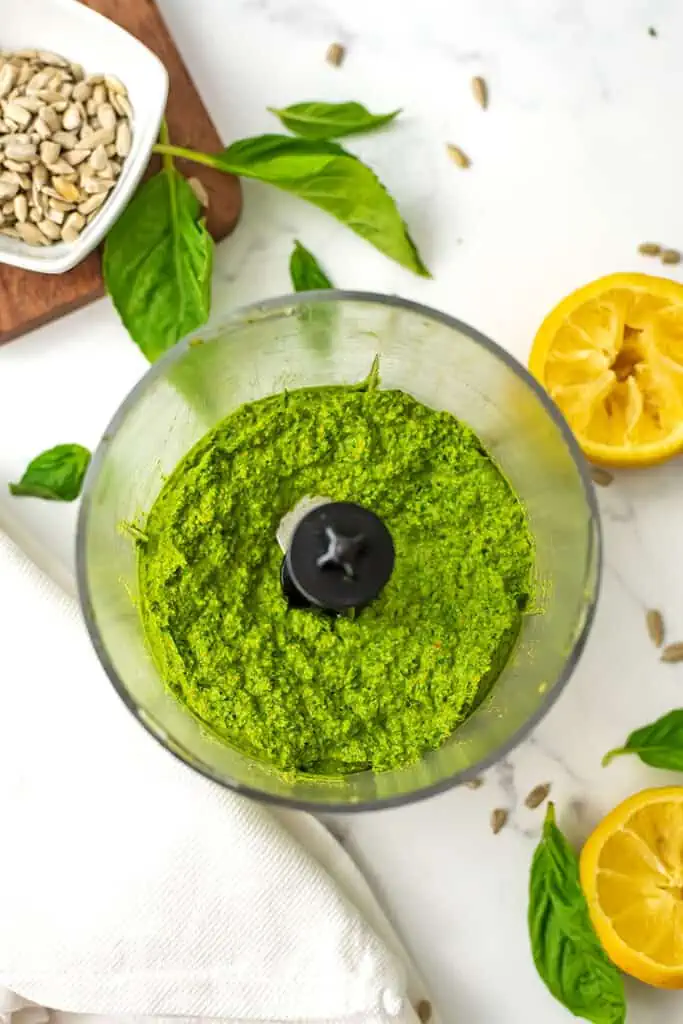
Can you make a double batch
Absolutely! This recipe doubles well. Store extra pesto in the fridge for up to 5 days or freeze it for longer storage (see recipe card for tips).
What equipment do I need to make pesto at home
Typically, you need a food processor or high speed blender to make pesto at home quickly.

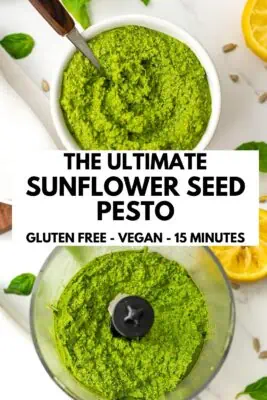


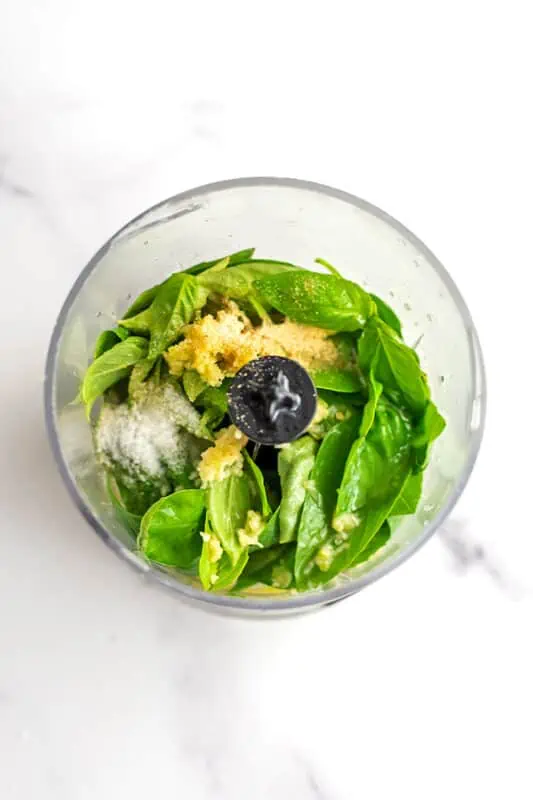
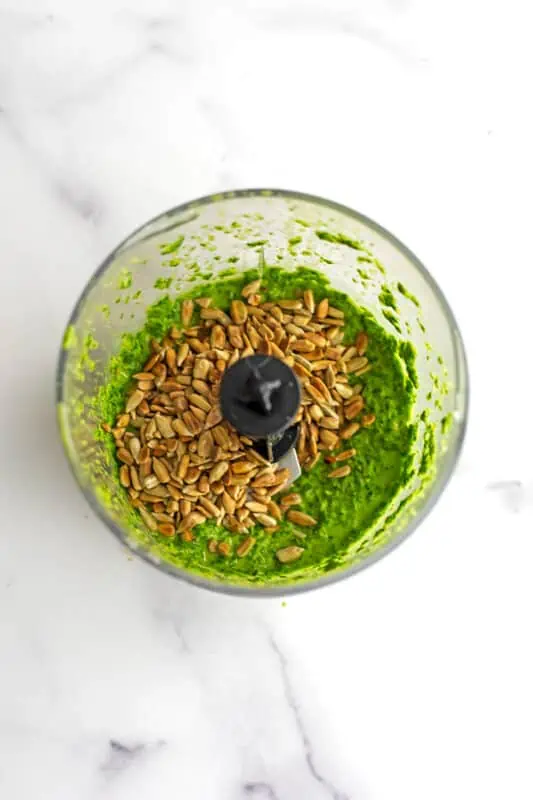
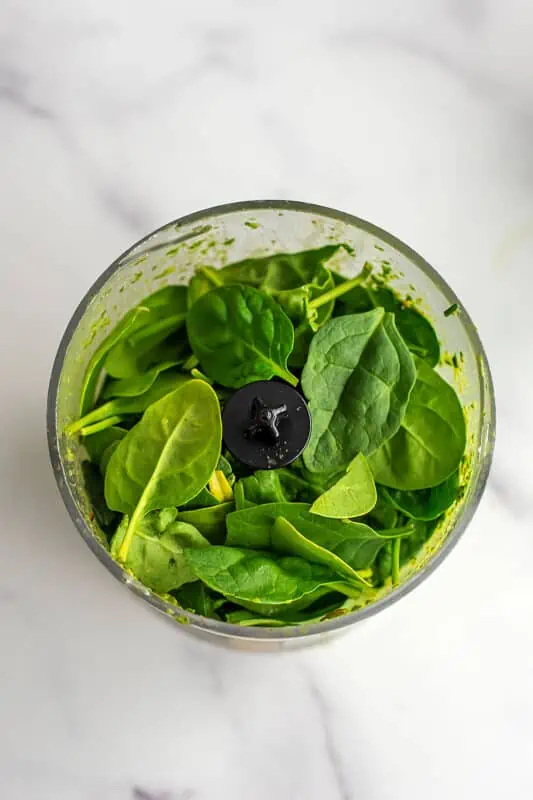
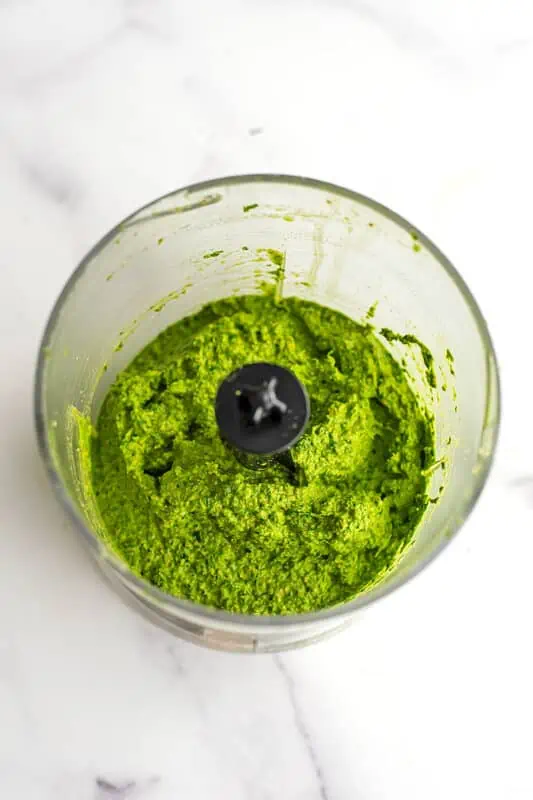
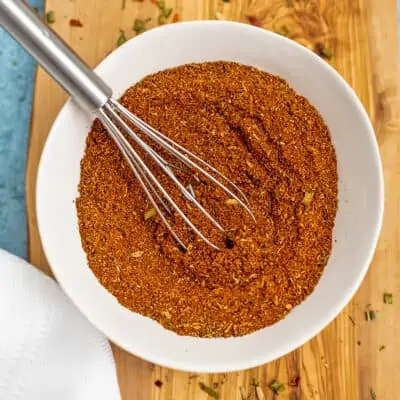
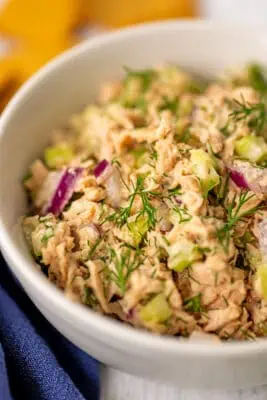
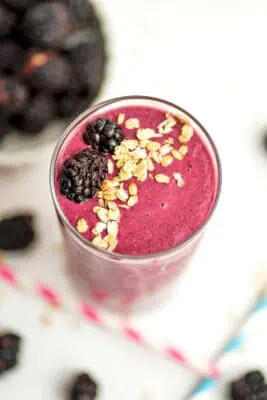

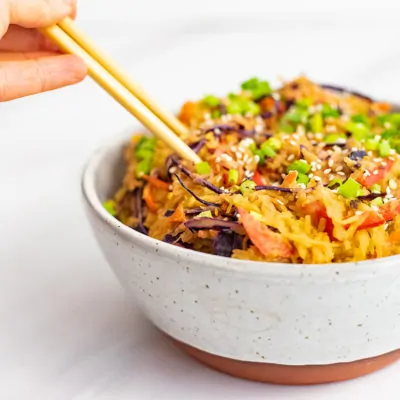

Love how easy this was to make! The sunflower seeds add a unique flavor. This recipe is a keeper!
So glad you loved this Barb! Thanks for stopping by and letting me know!